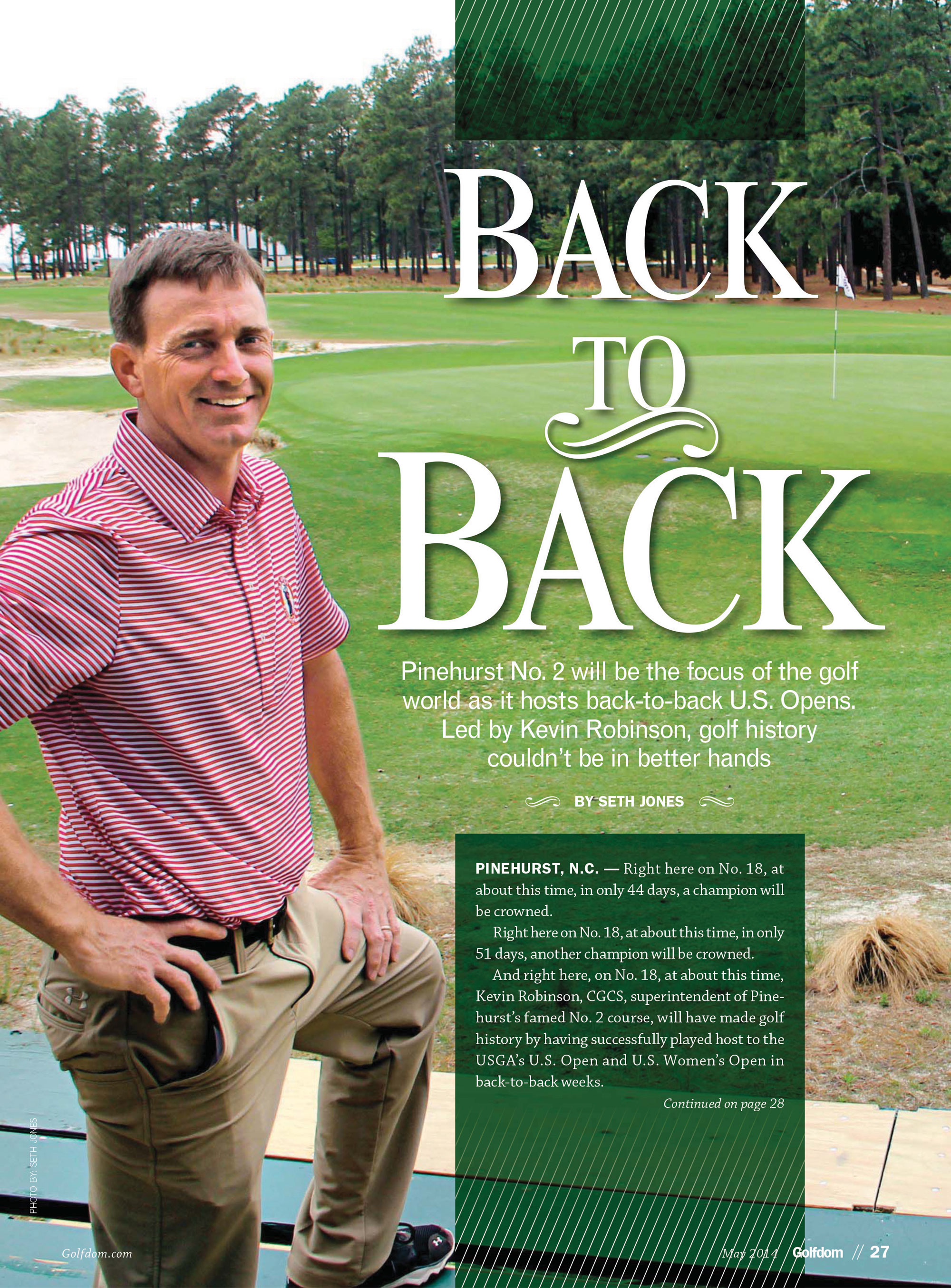The Golfdom Files: Take a trip back to 2014 as the Pinehurst crew prepared to host back-to-back championships
Right here on No. 18, at about this time, in only 44 days, a champion will be crowned.
Right here on No. 18, at about this time, in only a couple of days, another champion will be crowned.
And right here, on No. 18, at about this time, Kevin Robinson, CGCS, superintendent of Pinehurst’s famed No. 2 course, will have made golf history by having successfully played host to the USGA’s U.S. Open and U.S. Women’s Open in back-to-back weeks.
Yes, it will be hard work … but the reward will be a memory for a lifetime.

Photo: Golfdom staff
The renovation
Before even considering the logistics of hosting the U.S. Open (June 12-15) immediately followed by the U.S. Women’s Open (June 19-22), consider what this course has gone through in the past five years.
The No. 2 that hosted the 2005 U.S. Open and the No. 2 of 2014 barely resemble each other. If it were a high school reunion, No. 2 is that friend who lost so much weight he is only recognizable by the sound of his voice. But instead of pounds, No. 2 dropped bermudagrass rough. Lots.
The renovation by Bill Coore and Ben Crenshaw, now widely celebrated, was a culture shock at first. The idea was to take away all the bermudagrass roughs and bring back the sweeping white sand and a selection of native vegetation that was present when Donald Ross designed the course in 1907. Fairways went from an average width of 27 yards to an average width of 46 yards. The course went from 1,150 irrigation heads to 450 irrigation heads, from using 55 million gallons of water annually to 12 million gallons.
“What Donald Ross had here is one of the best natural landscapes for golf in America. That landscape included sand hills and wiregrass,” says Bob Farren, CGCS, director of maintenance at Pinehurst Resort. “Coore and Crenshaw knew that was the identity of the course. And frankly, we had covered a lot of it up in my 31 years here.”
The practice of overseeding was also eliminated. That means diesel rough mowers now get parked in November and don’t get fired up again until the spring, saving on gas. It also saves on water, fertility and labor.
The process of bringing in native vegetation — some of which other courses might call weeds — was keyed in on with the help of the turf program at N.C. State University. Tom Rufty, Ph.D., and Danesha Seth Carley, Ph.D., helped Pinehurst identify what plants would thrive and be favorable, and what plants would be invasive.
Now vegetation with common names like horseweed, carpetweed and crowfoot grass are prevalent throughout the course.
“We’re redefining what people call weeds. It’s only a weed if you don’t want it there,” says Seth Carley. “Bob and Kevin would take us around the course and point something out. They’d say, ‘We love this. How do we get more of it and spread it?’”
The crew planted 20,000 Carolina wiregrass sprigs by hand.
“Think about planting all this wiregrass and not knowing if it would live or not,” laughs Robinson. “When we first started I thought, ‘Golly, is this stuff going to make it?’ I would have been happy with a 60 percent success rate. But shoot, every one of them made it.”
John Jeffreys, assistant superintendent on No. 2 says that though this new look is more sustainable, it’s not necessarily easier to maintain.
“It takes skilled labor to manage the wire grass areas,” Jeffreys says. “Anyone can hop on a rough mower and mow rough — just don’t put it in a bunker. But to tell someone to selectively remove these plants, those plants, but not these plants? It’s a difficult method. We manage this course completely different now. There was rough, pine straw, clear wooded areas, no pinecones. It’s almost like going to two different properties… even on different sides of the country.”











